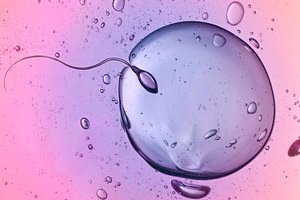
All iLive content is medically reviewed or fact checked to ensure as much factual accuracy as possible.
We have strict sourcing guidelines and only link to reputable media sites, academic research institutions and, whenever possible, medically peer reviewed studies. Note that the numbers in parentheses ([1], [2], etc.) are clickable links to these studies.
If you feel that any of our content is inaccurate, out-of-date, or otherwise questionable, please select it and press Ctrl + Enter.
Mitochondrial mutations in eggs do not accumulate with age
Last reviewed: 09.08.2025

It has long been known that the number of mitochondrial DNA (mtDNA) mutations in human tissues increases with age. But what happens in oocytes, the key cells for transmitting mtDNA to the next generation? New work in Science Advances shows that in humans, there is no age-related increase in mtDNA mutations in oocytes, while mutations increase in blood and saliva. Moreover, oocytes show evidence of purifying selection based on allele frequency, which “sweeps out” potentially harmful changes.
Research methods
The scientists sequenced mtDNA in individual oocytes: 80 eggs from 22 women aged ~20 to 42 years were analyzed and the results were compared with mtDNA from the blood and saliva of the same participants. They assessed heteroplasmy (the proportion of mutant copies of mtDNA) and the distribution of mutations across the genome to identify signs of selection - primarily a deficit in high-frequency mutations in functionally critical regions.
Key Results
- No age trend in oocytes. Unlike blood and saliva, where mtDNA mutation rates increased with age (by about a third), no increase was detected in human oocytes.
- Allele frequency selection. High-frequency mutations in oocytes are less common in functionally important mtDNA regions than expected by chance; low-frequency ones are more evenly distributed, a sign of purifying selection at work.
- Contrast with somatic tissues: In the blood/saliva of the same women, mutations increase with age, emphasizing that the reproductive line is protected by quality control mechanisms, unlike somatic cells.
Interpretation and clinical conclusions
The work reinforces the idea that there are biological barriers in the human female germline against the accumulation of dangerous mitochondrial variants, likely through a combination of a bottleneck, selective mitochondrial culling, and/or cellular selection of oocytes. In practical terms, this means that late maternal age does not in itself lead to an avalanche-like increase in mtDNA mutations in eggs. This does not eliminate age-related risks associated with chromosomal aneuploidies, etc., but it does reduce concerns specifically about mitochondrial mutations.
Authors' comments
- Key message: Unlike blood and saliva, mtDNA mutations do not accumulate with age in women’s oocytes; “mtDNA in human oocytes is protected from age-related mutation accumulation,” the authors emphasize. This is especially relevant as people “increasingly delay having children.”
- How exactly are they “protected”? In oocytes, high-frequency (≥1%) variants are significantly less common in coding regions, while low-frequency variants are more evenly distributed. The authors interpret this as frequency-dependent purifying selection that sweeps out potentially harmful mutations.
- Practical implications: Monitoring reduces concerns that later maternal age itself increases the risk of transmitting mitochondrial mutations to children (this does not negate other age-related risks, such as aneuploidies), and can be used in reproductive counseling.
- Limitations noted by the authors: The study included 80 single oocytes from 22 women aged 20–42 years; the sample and age range are limited, and expansion and independent validation are required.
- Context with previous data: The authors note consistency with primate models: in macaques, the increase in mutations in oocytes was observed only until ~9 years of age and then did not increase - indicating common germline defense mechanisms.
The authors emphasize that “mutations do not increase with age” specifically in oocytes and that the body actively prevents the fixation of potentially harmful variants — another argument in favor of the existence of evolutionarily developed mechanisms for protecting the germ line. They also note the contrast: in somatic tissues (blood, saliva), the mutation load increases with age, while in eggs it does not, which is important for understanding the risks of late pregnancy and the heritability of mitochondrial diseases.
